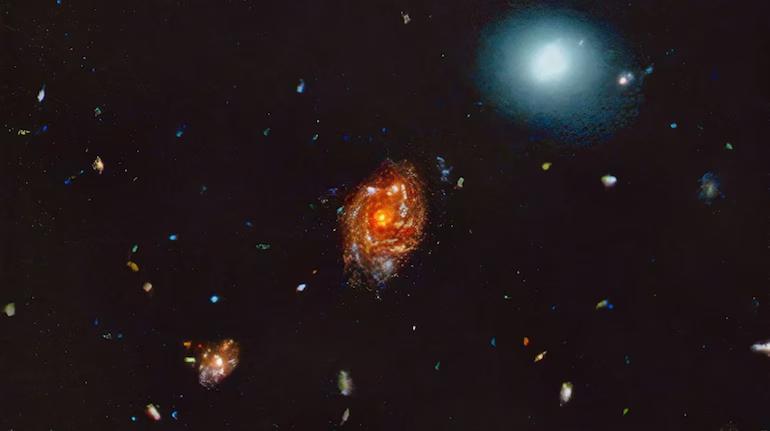
Galaxy Whose Mass is 5 Times That of Milky Way Discovered by NASA
In a groundbreaking discovery, NASA’s James Webb Space Telescope has uncovered a galaxy that is a staggering 5 times more massive than our own Milky Way. Dubbed the “Giant Wheel”, this ancient galaxy is believed to have formed just 1.7 billion years after the Big Bang, a time when the universe was still in its early stages of development.
Located a mind-boggling 12 billion light-years away, the Giant Wheel galaxy is a behemoth of cosmic proportions. Its sheer size and mass have left astronomers in awe, as it defies the conventional understanding of galaxy formation and evolution.
The discovery was made possible through the advanced capabilities of the James Webb Space Telescope, which is equipped with cutting-edge technology that allows it to peer deeper into the universe than ever before. By analyzing the light emitted by the galaxy, scientists were able to determine its mass and distance from Earth.
But what’s truly remarkable about the Giant Wheel galaxy is its rotation speed, which matches the Tully-Fisher relation – a fundamental principle in astronomy that links a galaxy’s mass with its rotation speed. This means that the galaxy’s mass is directly proportional to its rotational velocity, a phenomenon that is observed in many galaxies, including our own Milky Way.
The Tully-Fisher relation is a crucial tool for astronomers, as it allows them to estimate the mass of a galaxy without directly measuring it. By observing the rotation speed of a galaxy, scientists can infer its mass, which is essential for understanding the evolution and structure of the universe.
The Giant Wheel galaxy’s mass is so immense that it challenges our current understanding of galaxy formation and evolution. According to the standard model of cosmology, the first galaxies in the universe were small and irregular, with masses similar to those of modern-day dwarf galaxies. However, the Giant Wheel’s massive size suggests that it may have formed through a different process, possibly involving the merger of smaller galaxies.
The discovery of the Giant Wheel galaxy also raises questions about the early universe and the conditions that led to its formation. At just 1.7 billion years after the Big Bang, the universe was still in its “dark ages”, with no stars or heavy elements present. The Giant Wheel’s massive size and mass suggest that it may have formed in a region of the universe where conditions were particularly favorable for galaxy formation.
While the Giant Wheel galaxy is an extraordinary discovery, it’s not without its challenges. The galaxy is so distant that its light has taken 12 billion years to reach us, a reminder of the vast scales of time and space that separate us from the earliest moments of the universe.
As scientists continue to study the Giant Wheel galaxy, they may uncover new insights into the early universe and the processes that shaped the cosmos. The discovery of this ancient galaxy is a testament to the power of human curiosity and the importance of continued exploration and research.






